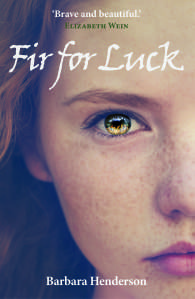New Children's Book Set In The Dark Days of Scotland's Highland Clearances
A new children's book by writer Barbara Henderson in her debut novel, Fir for Luck, is set during the dreadful time in Scottish history known as the Highland Clearances. The book is inspired by real events that took place in Strathnaver in Sutherland where women and children attempted to resist actions to clear their community. It tells of a 12-year-old girl who takes a stand against the threatened clearance of her village in 1841. Published by Cranachan Publishing Limited, the author has said that one of the reasons for writing her novel was to offer a modern telling of the clearances for young readers.
The dark period of Scottish history known as the Highland Clearances were enforced after the defeat of the Jacobite Risings (1648-1746). The British government were determined to act against those clans who supported the Risings with increased repression after the 1746 defeat of Scottish forces at the Battle of Culloden. The Act of Proscription was an Act of the British Parliament which came into effect in Scotland on 1 August 1746 in an attempt to crush the Scottish Clan system and Gaelic culture. Over the years that followed common lands and the long standing tenant rights of the people were taken away. Those tenants seen to be surplus to requirements were ‘cleared’ off the estates from about 1780. The Clearances were continuing nearly 70 years later at the time of the potato famine in 1846.
The clearances were not confined to the Highlands although those experienced there were particularly brutal. These traumatic events devastated Gaelic culture and clan society, driving people from the land their families had called home for centuries. In what is known as the 'Year of the Sheep' the first mass emigration took place in 1792. Scots forced to leave their land ended up travelling to live in America, Canada, New Zealand and Australia.

- Douglas MacQueen's blog
- Log in to post comments





